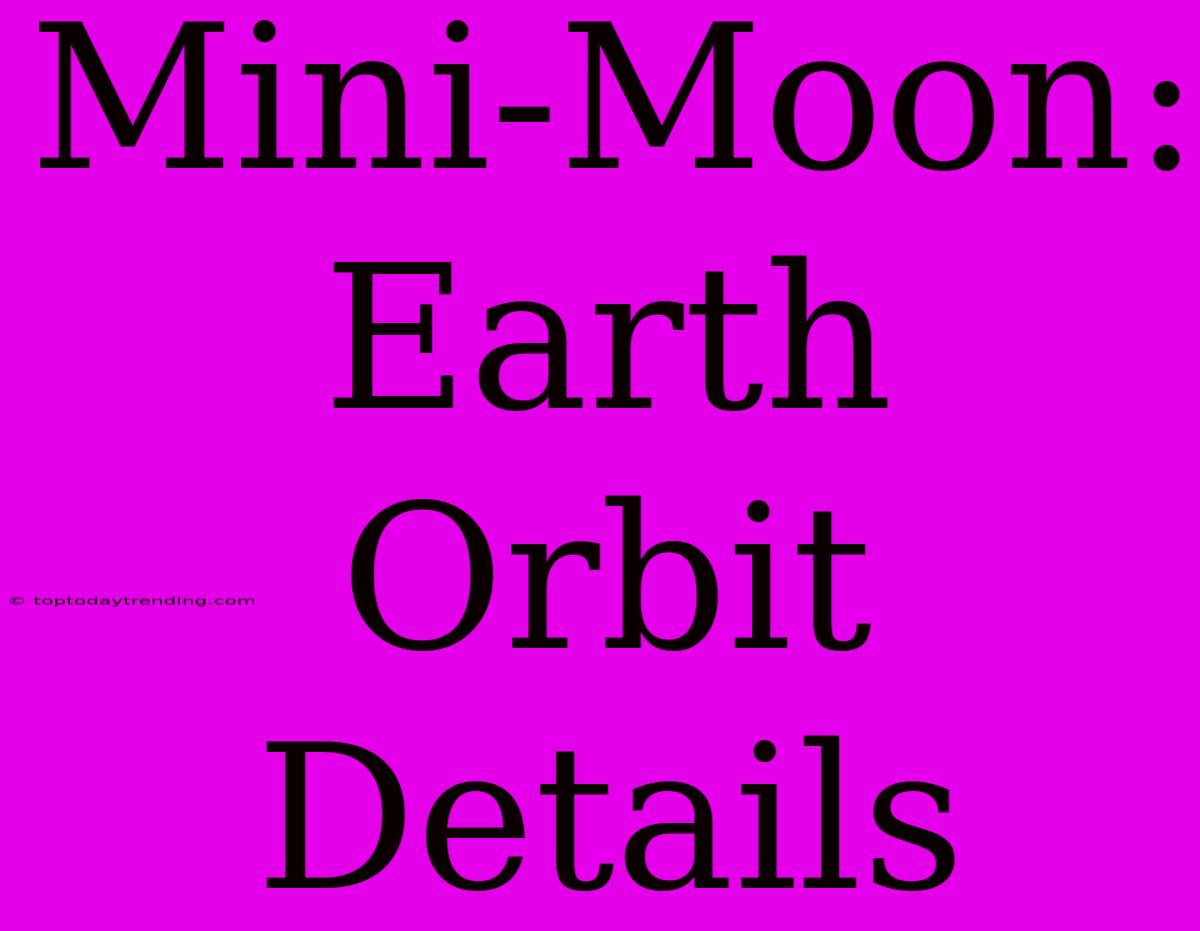Mini-Moon: Earth Orbit Details
The idea of a mini-moon orbiting Earth might sound like something out of science fiction, but it's a very real phenomenon. While our planet has one large, familiar moon, temporary, smaller objects can sometimes get caught in Earth's gravitational pull, becoming our companions for a brief period.
What is a Mini-Moon?
A mini-moon is a near-Earth object (NEO) that gets temporarily captured by Earth's gravity. These objects are usually small, ranging in size from a few meters to a few hundred meters. Mini-moons are not permanent satellites like our moon; they eventually escape Earth's gravitational pull and continue their journey through space.
How do Mini-Moons Form?
Mini-moons often originate from the main asteroid belt between Mars and Jupiter. When an asteroid gets nudged out of its orbit, it can wander closer to Earth. If its trajectory aligns just right, Earth's gravity can pull it in, temporarily capturing it.
The Orbit of a Mini-Moon
Mini-moons typically orbit Earth in highly elliptical paths. This means their distance from Earth varies significantly throughout their orbit. They can spend weeks, months, or even years orbiting Earth before eventually escaping its gravitational pull.
Here are some key characteristics of a mini-moon's orbit:
- Orbital Period: The time it takes a mini-moon to complete one orbit around Earth can vary depending on its size and orbital path. It could range from a few days to several years.
- Orbital Inclination: The angle of a mini-moon's orbit relative to Earth's equator can also vary.
- Orbital Eccentricity: Mini-moons often have a high eccentricity, meaning their orbits are highly elongated. This can cause them to come very close to Earth at one point in their orbit and then travel far away at another.
Examples of Mini-Moons:
- 2020 CD3: This mini-moon was discovered in 2020 and was estimated to be about 1.9-3.5 meters in size. It orbited Earth for about three years before escaping in March 2023.
- 2006 RH120: This mini-moon was discovered in 2006 and remained in orbit for about a year.
Studying Mini-Moons:
Mini-moons provide valuable opportunities for scientists to study:
- Composition of asteroids: By analyzing the light reflected from mini-moons, scientists can learn about their composition, giving us insights into the formation of the solar system.
- Earth's gravitational field: The trajectory of a mini-moon can help researchers map Earth's gravitational field in detail.
- Potential threats from NEOs: Studying mini-moons can help us better understand the potential dangers posed by asteroids and other NEOs that might pose a threat to Earth.
The Future of Mini-Moon Research:
As our ability to detect and track NEOs improves, we are likely to discover even more mini-moons in the future. These temporary companions offer a unique window into the vastness of our solar system and its dynamic interplay of gravity and motion.
As we delve deeper into mini-moon research, we can expect to gain new insights into the mysteries of our celestial neighborhood.

